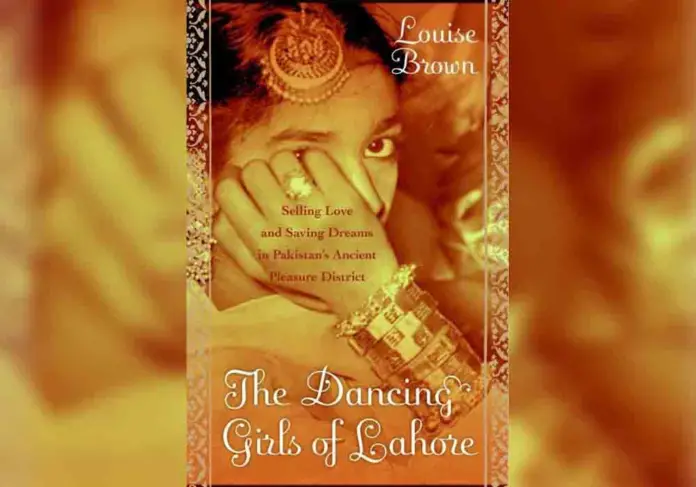The Dancing Girls of Lahore is a realistic portrayal of life in Lahore’s Heera Mandi, also known as Diamond Market. The story is told through the eyes of the narrator, Louis Brown in a first person narration.
The symbolism here is apt because a diamond represents beauty-a quality of the dancing girls. The narrator then shifts his gaze to capture the beauty, charm and vivacity of Lahore.
The following lines sum up the essence of Lahore, the city of Mughals:
“Lahore is a wonderful city with rich character and a warm charm.”
In the ancient Lahore, a courtesan was respected and had honour.
“Things would be different in those times: women like them were respected. They were artists not dirty prostitutes.”
In the modern times, the picture has changed. ‘What we see today in Lahore are the remnants of Islamic and Hindu social practices that produced the ‘tawaif’ the courtesan.
A parallel can be drawn here with the protagonist Fiemetta of In the Company of the Courtesan by Sarah Dunant. Fiemetta is a Venetian courtesan. Refined in the art of cullinary, dance, music and poetry, she too is a woman of prestige!
Umrao Jaan Ada, an Urdu novel by Mirza Hadi Ruswa shares the same thematic concern. Umrao Jaan Ada too is ‘surrounded by a culture of luxury, music and poetry.’ She too is a woman of substance. And not just an ordinary “kanjari”
However, no matter how refined the courtesan, the fact remains that prostitution is illegal in Pakistan and all Muslim countries and so is pre-marital sex. Brown takes refuge in Iqbal’s quarter, who is the son of a courtesan who paints the “women of Heera Mandhi.” Louis learns a lot about prostitution from Iqbal.
Heera Mandi is defined by two important places – the iconic Tarunam chowk and Tibbi Gali. In Tibbi Gali no one wears a dupatta. In the book, the women of Tibbi Gali have no honor and are cheap women who sell their soul and purity for a few hundred rupees. The protagonist Maha is a middle-aged mother who lives and works in the walled city of Lahore and works as a dancing girl.
Maha once the most beautiful and accomplished dancing girl-a celebrated patron of the arts, now as she aged has lost her glory. She has three daughters – Nena, Nisha and Ariba. What is fated for Maha and her daughters is a question readers have to find out for themselves. In Heera Mandhi, when it comes to marriage, it is only a miracle that a man will accept a call girl as his wife. The disparity between a man and a woman is painful. Whereas:
“It’s acceptable for rich men to have many wives and extra marital affairs are almost compulsory for a man of status.”
“The problem is that the attraction between men and women is so uncontrollable that it will lead to chaos.”
Therefore, the dupatta helps control the temptation.
The narrator then shifts to the hygiene conditions in the neighborhood, which is stinky and rancid with rats scurrying about. Most of the residents suffer from Tuberculosis and the women have lice in their hair. The spread of HIV and AIDS is common because of the illegitimate carnal activities. The scene shifts to Tariq the sweeper. Louis talks of the dignity of Tariq which does not stem from religion, even though that acts as a pillar of support and comfort for them. His worth is measured from how he is the only one who’s not involved in the soul consuming business of Heera Mandi.
A heart wrenching narration of the Heera Mandi, Brown spent years researching and trying to understand the lives of women in the Red Light Area and he has done a remarkable job in The Dancing Girls of Lahore.







